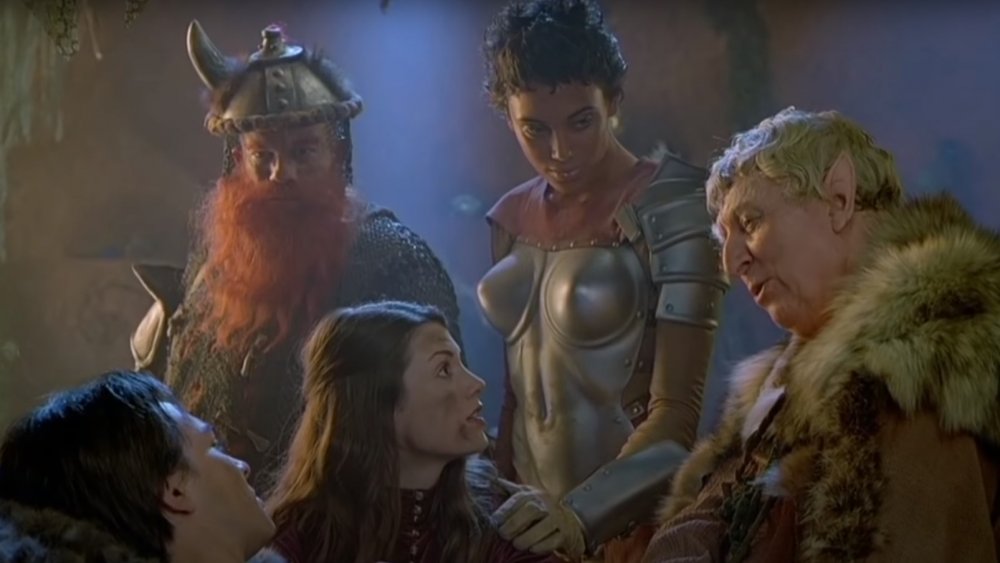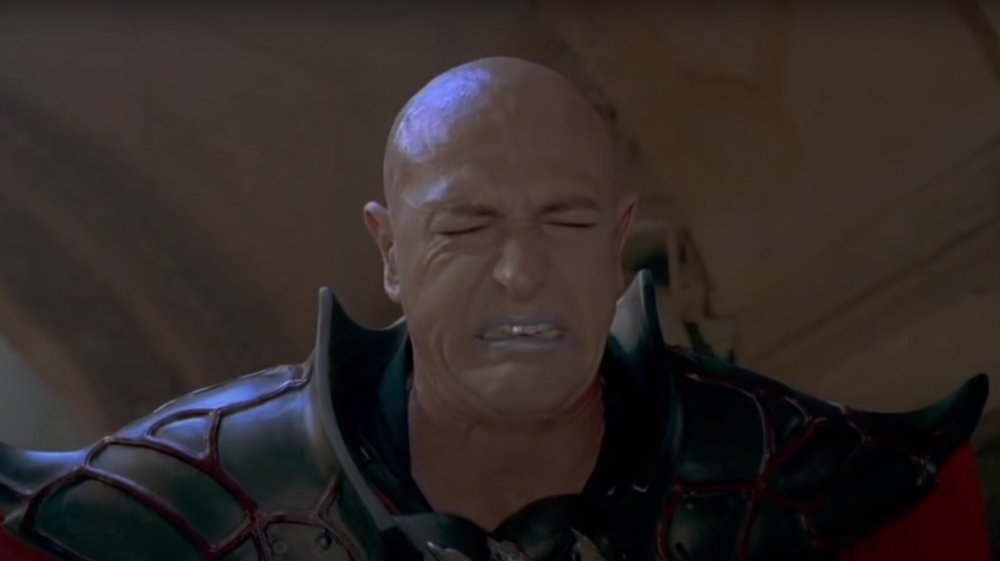The Dungeons & Dragons Movie Fantasy Fans Want To Forget
The nerd world has a long memory. More than twenty years and dozens of remarkable performances later, we're still mad at George Clooney for Batman & Robin, and he wasn't even the first Dark Knight to bedazzle his chest piece with a pair of permanent wardrobe malfunctions. For the record, that movie holds an 11% critical approval rating on Rotten Tomatoes, a score that's only admirable when compared to Dungeons & Dragons' 10%.
It was the year 2000, and the world was transitioning from the perceived disaster of Y2K into the real disaster that would be the rest of the 21st century. Fantasy enthusiasts were still a year removed from Peter Jackson's astonishingly profitable trilogy of obsessive compulsive filmmaking. With recent years having seen dinosaurs, robots, and mummies brought to life by the power of computer generated imagery, the time seemed right to tackle grand, fantastic, make believe worlds. Filmmakers, at long last, could fulfill Walt Disney's promise to "keep moving forward, opening new doors, and doing new things." As anyone who has ever tried lutefisk can tell you, trying new things isn't always good.
Enter: Dungeons & Dragons, dream project and directorial debut of Courtney Solomon. Speaking to Wired in 1999, Solomon described the long process of convincing the company behind D&D to trust him with their baby, saying "They were worried that if a movie comes out and it's not true to the game itself, then their audience would be disappointed for issuing a license to such a poor movie." That hesitation was part of what turned the project into a decade-long ordeal, which tragically ended in a critical (and commercial) miss.
Dungeons & Dragons could've used a reroll
Maybe you've seen Dungeons & Dragons and would like a refresher. Maybe you haven't and just want a quick synopsis. The plot is standard fantasy fare: Take the plot of Star Wars and replace all the space stuff with magic stuff. The Death Star is a bunch of dragons. The inside of the Death Star is dungeons.
Justin Whalin, who is in no way just Will Wheaton operating beneath a pseudonym and a Harrison Ford smirk, plays protagonist Ridley Freeborn. Along for the ride is Snail, played by Marlon Wayans with all the subtlety of one of the more problematic Autobots. Thora Birch, who did not play the Childlike Empress in The NeverEnding Story, does her best to convince you that she did. Tom Baker shows up for a minute as Halvarth the Elf, wearing an expression that says "please take these ears off of me, I promise I'll get back in the TARDIS and be good." Rocky Horror creator Richard O'Brien makes an appearance, as well, and nobody has been able to sufficiently say why.
The special effects in Dungeons & Dragons are especially impressive if you imagine you're watching a cutscene from a mid-range '90s PC game, but mostly serve to make the CGI in Dragonheart look like the CGI in one of the sequels to Dragonheart. If it seems like the computer-generated backgrounds went a step too far, it's important to keep in mind that most of the scenery had probably already been chewed up by Jeremy Irons by the time rehearsals were finished. The whole thing serves as a reminder of the hubris inherent in trying to adapt an interactive experience into an on-the-rails adventure, a la just about every video game movie ever made.
Maybe that's why it only ever got two sequels and a proposed D&D reboot, tentatively scheduled for release in 2022.

